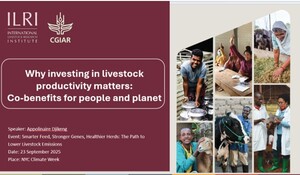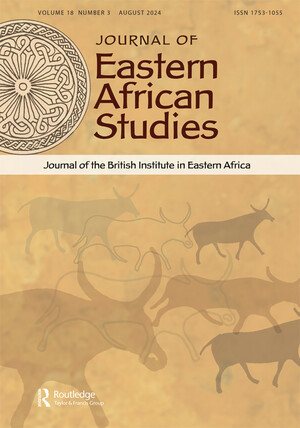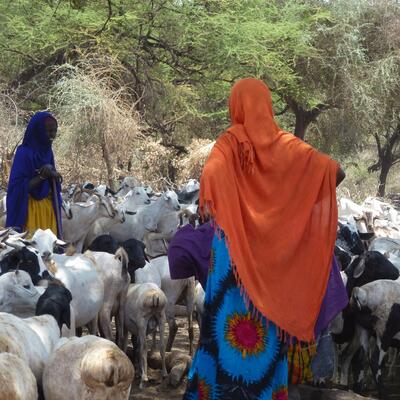
National meeting assesses the status and economic benefits of donkeys and mules in India
Since January 2020, the International Livestock Research Institute (ILRI) and partners have been mapping the India’s donkey and mule population to identify their usage patterns in rural and urban communities.
In addition to providing draft work for agriculture in India, donkeys provide milk for their keepers. In recent years there has, however, been a sharp decline of the donkey and mule population as shown by the 2019 livestock census of India. The donkey population in the country is now 112,000 and there are 80,000 mules compared to a high of 320,000 donkeys and 160,000 mules in 2012.
So far, the ‘Mapping the issues of Indian donkey and mule population and identify the potential intervention strategies and partnership’ project, which is supported by the Donkey Sanctuary (TDS), UK, has organized stakeholder meetings and household surveys in six Indian states (Rajasthan, Uttar Pradesh, Uttarakhand, Gujarat, Maharashtra and Bihar) that have a sizable donkey and mule population.
On 10 October 2022, the project organized a national stakeholder meeting on the ‘Status of donkey and mule population and their dependent communities in India’ in New Delhi.
Habibar Rahman, ILRI regional representative for South Asia expressed concern about the declining population of donkeys in India. ‘The number of donkeys has decreased by 61% since the last livestock census in 2012 with the highest decline of 71% in Gujarat, Maharashtra and Rajasthan,’ he said. He gave an overview of the ILRI-led project on donkeys and mules in India, which though delayed due to COVID-19-related restrictions had already started work in the six aforementioned states with support from the state animal husbandry and veterinary departments, universities, and other stakeholders.
Isabelle Baltenweck, leader of ILRI’s Policies, Institutions and Livelihoods program, said that equines, next to cattle and buffalo, play a key role in supporting the livelihoods of many poor, small-scale farmers in India. She called for more research to understand the role that women play in equines production and management. She also called for the engagement of the donkey sector’s stakeholders including farmers in coming up with policies to improve the sector’s performance.
Anil Kumar Singh, vice president of the National Academy of Agricultural Sciences (NAAS), emphasized the importance of promoting non-bovine milk, i.e., donkey milk and camel milk, by highlighting its nutritional and economic value (donkey milk currently retails at INR 4,500 [USD 55] per litre). Singh also said there is need to focus on donkey value chains and encourage start-ups that can support the sector.

From left: Bhupendra Nath Tripathi, deputy director general (Animal Sciences) at the Indian Council of Agricultural Research (ICAR); Trilochan Mohapatra, president of the National Academy of Agricultural Sciences (NAAS) and director general of ICAR; Habibar Rahman, ILRI regional representative for South Asia; and Isabelle Baltenweck, leader of ILRI’s Policies, Institutions and Livelihoods program (photo credit: ILRI/Sharmistha Chakraborty).
Bhupendra Nath Tripathi, deputy director general (Animal Sciences) at the Indian Council of Agricultural Research (ICAR) said a national policy on equine welfare would help address issues such as the donkey population decline by exploring, among other challenges, how to balance the rapid adoption of mechanization, and maintaining a sufficient number of donkeys and mules to support the local communities. He suggested that ICAR’s National Research Centre on Equines (NRCE) explore ways of improving all donkey and mule breeds, donkey dairy units, value chain systems, and economics.
Trilochan Mohapatra, president of the National Academy of Agricultural Sciences (NAAS) and director general of ICAR, said donkeys are neglected animal species because of the adoption of new technology and mechanization. He said the welfare of farmers who depend on donkeys for their livelihood should be protected by promoting non-bovine milk and creating awareness of the health benefits of donkey milk. He urged researchers to explore whether donkey milk that can be used for pharmaceutical purposes such as in immuno-modulators.
Mohapatra and Baltenweck led a technical session at the meeting that discussed among other topics, the household survey results and the key findings from the project survey in the six states, the declining population of donkeys and its possible causes, the opportunities for using donkeys in different parts of the country, and the nutritional value of donkey milk. Among the recommendations from the discussion were that:
- Special emphasis be given to donkey milk and the development of a cooperative model for the promotion of donkey milk producers.
- All the potential stakeholders be brought together to work in donkeys research including ICAR, the Department of Animal Husbandry and Dairying, the Ministry of Fisheries, Animal Husbandry and Dairying, the government, non-governmental organizations, and donkey sanctuaries.
- A National Donkey Production Program (NDPP) be established for the welfare of donkeys.
- The Food Safety and Standards Authority of India (FSSAI) certification be applied to donkey milk.
- An artificial insemination program be started for donkeys with relevant subsidies.
- Indigenous donkey are given attention to improve breeds, expand the population herd and develop donkey and donkey-products export markets.
- Medicinal and cosmetic properties of donkey milk be fully utilized through economic analysis and appropriate extension.
Data generated from this project will be used by ILRI and partners to create guidelines for donkey production, management and breeding in India. The research will also strengthen market linkages and value addition in the donkey sector.
This project is funded by the Donkey Sanctuary, UK, an international animal welfare and rescue charity that is transforming the quality of life for donkeys, mules and people worldwide. The sanctuary operates major projects in Egypt, Ethiopia, India, Kenya, and Mexico.
Read more about the project at https://www.ilri.org/research/projects/scoping-study-mapping-issues-indian-donkey-and-mule-population-and-identify
(The post was edited by Chi Nguyen, regional communications officer with ILRI in East and Southeast Asia; and Paul Karaimu, communications officer, ILRI)



















